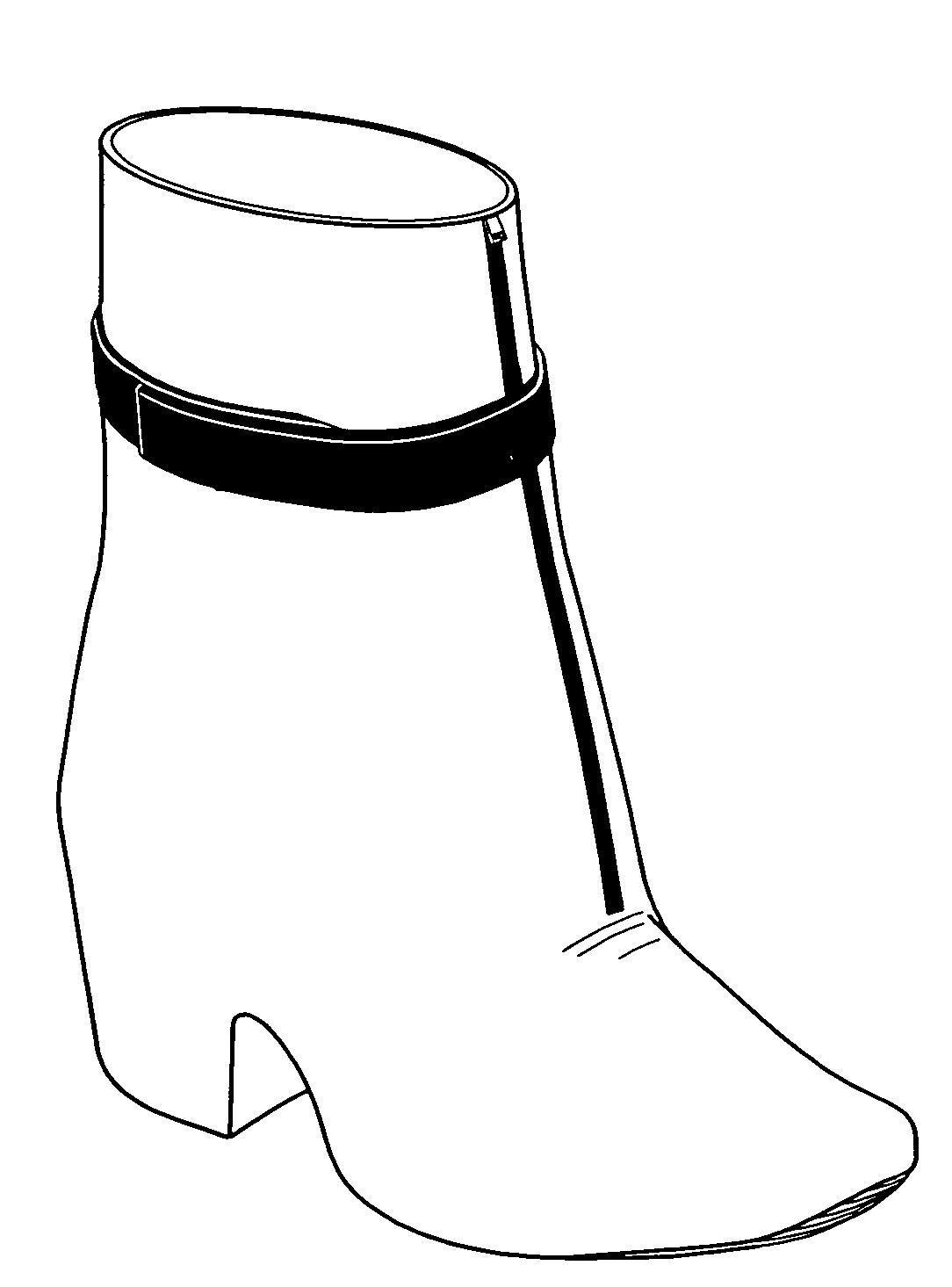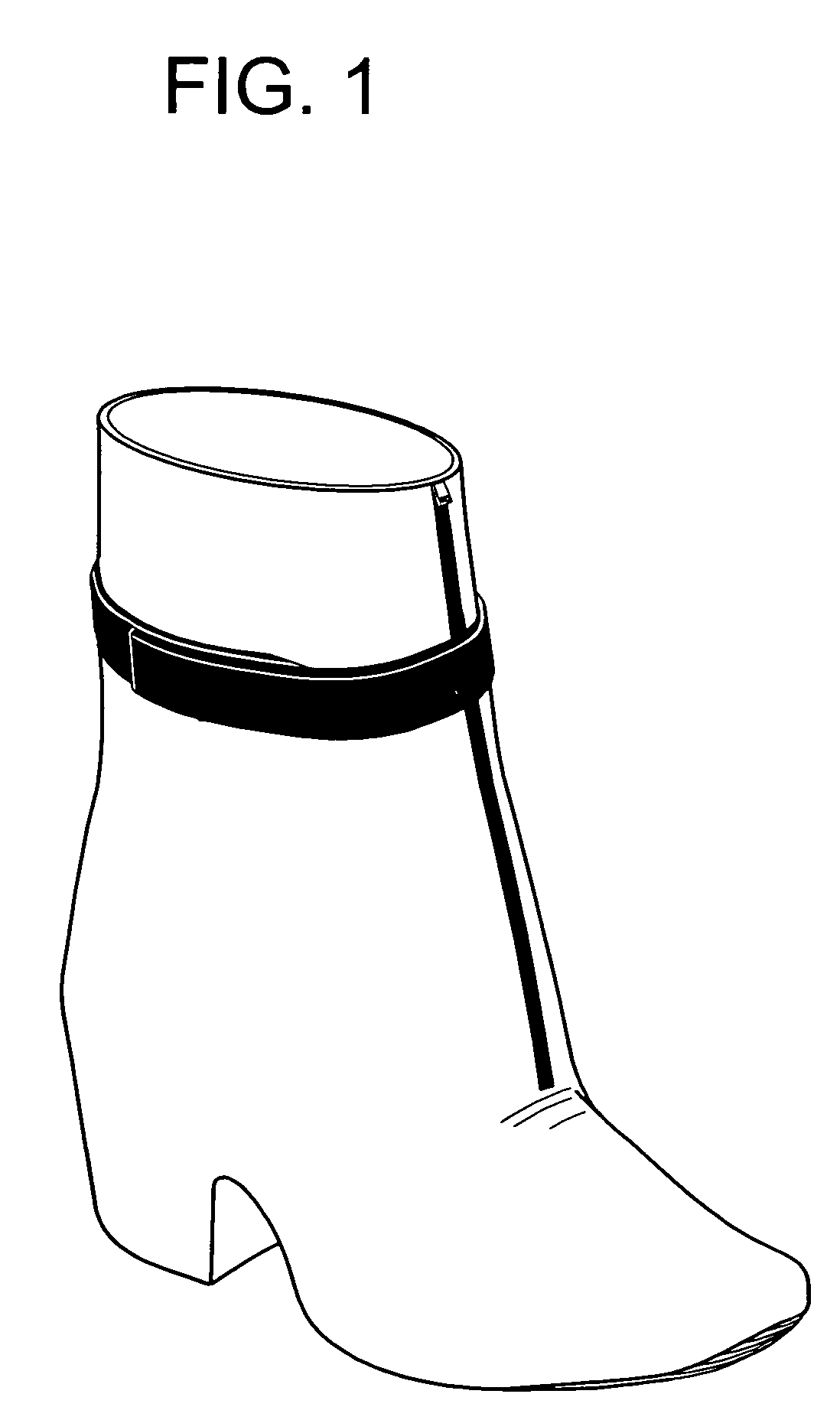Heel stabilizer
a technology of heel stabilizer and heel, which is applied in the direction of fastenings, footwear, apparel, etc., can solve the problems of not having the capability of protecting a shoe with a high heel, not preventing or minimizing heel teetering, and not adequately addressing the need for rain-proof footwear which provides both aesthetic satisfaction and physical functionality, so as to achieve less ground coverage, increase rigidity, and reduce the effect of teetering
- Summary
- Abstract
- Description
- Claims
- Application Information
AI Technical Summary
Benefits of technology
Problems solved by technology
Method used
Image
Examples
Embodiment Construction
[0038]The heel stabilizing technology of the present invention provides increased stability to wearers of high heel shoes. Further, when incorporated within or attached to a shoe cover, the present invention provides increased stability to wearers of high heel shoes in inclement weather conditions and protects a wearer's shoes from other sources of wear and tear. Throughout this application the term “shoe” or “shoes” shall be held to encompass all footwear, including but not limited to pumps, sandals, boots, and the like. Throughout this application the term fastener shall be held to encompass all buckle(s), tab(s), snap(s), button(s), toggle closure(s), tie(s), hook and eye, hook and loop / self grip, elastic, drawstring, and / or loops in any combination.
[0039]In a preferred embodiment, the heel tension fastener is located at and / or attached to the back and / or sides of the heel portion of the shoe or shoe cover, and is adjusted by the wearer by pulling the loose end of the fastener up...
PUM
 Login to View More
Login to View More Abstract
Description
Claims
Application Information
 Login to View More
Login to View More - R&D
- Intellectual Property
- Life Sciences
- Materials
- Tech Scout
- Unparalleled Data Quality
- Higher Quality Content
- 60% Fewer Hallucinations
Browse by: Latest US Patents, China's latest patents, Technical Efficacy Thesaurus, Application Domain, Technology Topic, Popular Technical Reports.
© 2025 PatSnap. All rights reserved.Legal|Privacy policy|Modern Slavery Act Transparency Statement|Sitemap|About US| Contact US: help@patsnap.com



